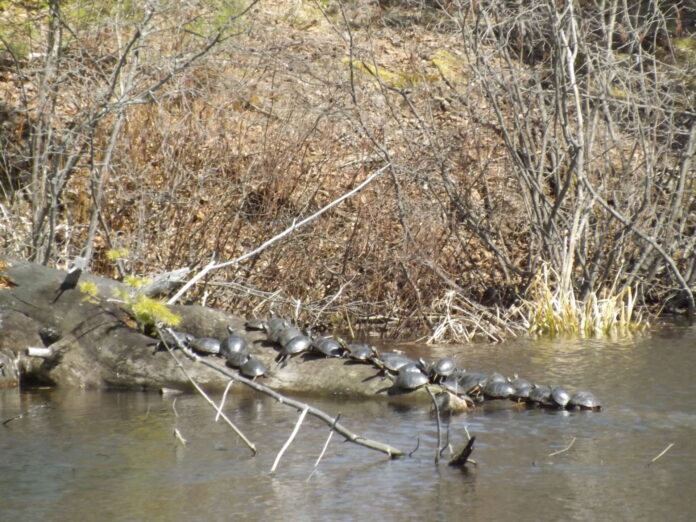It’s time to watch the roads, according to Think Turtle Initiative’s Kelly Wallace.
Wallace says that from now until June, drivers can expect to see increased turtle activity as they emerge from hibernation — or “brumation,” as it’s known for turtles.
“Hatchlings that remained in their nest over the winter — this is the time between now and about early June when they’ll start leaving their nests, once the ground warms up,” she said.
She adds there will also be more activity from turtles looking for basking spots.
“I’ve always kidded and said that turtles are actually solar-powered. Because they’re cold-blooded, they generate heat from the environment — they can’t generate it themselves. So that’s why the first thing they’ll do after coming out of hibernation is head for the warmth of the sun.”
Wallace says the sun gets their metabolism going — “kind of like the Energizer Bunny” — which she says is both a good and a bad thing.
“Great because they need that after hibernation, but also bad because now they’re going to be on the move and there’s more chance of them being on the roads.”
Wallace also shared some tips with Moose FM on how you can help turtles this season.
Here’s what she had to say:
Drive like you’re expecting turtles. Especially near wetlands, lakes, and rivers—early mornings, evenings, and rainy days are prime turtle time.
If you see a turtle crossing the road and it’s safe for you to stop, lend a hand. Always move the turtle in the direction it was heading, turtles don’t appreciate being turned around mid-journey.
Snapping turtles can’t hide in their shells and may act a bit spirited if approached. You know you are there to help them, but they do not. They are scared and looking out for themselves. Use a shovel, a car mat, or a sturdy board to guide them across, or gently lift them from the back of the shell with one hand placed beside the tail if you know how. Want advice about moving turtles safely? Give Think Turtle a call or text!
Watch out for hatchlings. They’re tiny and nearly invisible near gravel shoulders. If you spot one, help it reach the closest slow-moving water body.
If you encounter an injured turtle, call the Ontario Turtle Conservation Centre immediately at 705-741-5000 when you are with it. The Centre is a trusted organization dedicated to the protection and rehabilitation of turtles, and they can provide the best care for the injured turtle.



